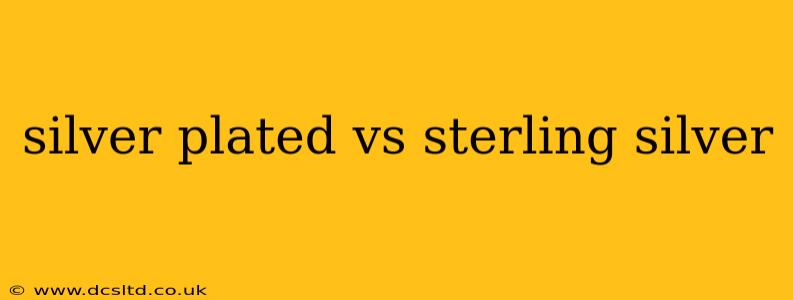Choosing between silver-plated and sterling silver jewelry or tableware can be confusing. Both offer a lustrous silver finish, but their composition, durability, and cost differ significantly. This guide will clarify the key distinctions to help you make an informed decision.
What is Silver Plated?
Silver plating is a process where a thin layer of pure silver is electrochemically bonded onto a base metal, typically copper, brass, or nickel silver. The thickness of this silver layer determines the item's longevity and resistance to wear. Thicker plating generally lasts longer. Think of it like a coat of paint – it's a surface treatment, not a solid silver item.
Advantages of Silver Plated:
- Affordability: This is the biggest draw. Silver plating is significantly cheaper than sterling silver because it uses less precious metal.
- Variety of Designs: Manufacturers can create intricate and elaborate designs more easily and affordably with silver plating due to the lower material cost.
Disadvantages of Silver Plated:
- Wears Off: The silver layer will eventually wear away with regular use and cleaning, exposing the base metal underneath. This tarnishing process can be accelerated by harsh chemicals or abrasive cleaning methods.
- Not as Durable: Silver-plated items are generally less durable and less resistant to scratches and dents than sterling silver.
- Lower Value: Silver-plated items hold little to no resale value compared to sterling silver.
What is Sterling Silver?
Sterling silver is an alloy consisting of 92.5% pure silver and 7.5% other metals, usually copper. The addition of copper increases the alloy's strength and durability while maintaining the desirable qualities of silver. The hallmark ".925" is used to denote sterling silver.
Advantages of Sterling Silver:
- Durability: Sterling silver is much more durable and resistant to wear and tear than silver plating. With proper care, sterling silver items can last for generations.
- Higher Value: Sterling silver holds its value and is often considered an investment.
- Superior Luster: The higher silver content generally results in a brighter, more lustrous finish.
- Tarnish Resistance (Relatively): While it will still tarnish, sterling silver tarnishes more slowly than silver plating.
Disadvantages of Sterling Silver:
- Higher Cost: The higher silver content makes sterling silver significantly more expensive than silver plating.
- Requires Care: Sterling silver requires regular cleaning and polishing to maintain its shine and prevent tarnish.
How to Tell the Difference Between Silver Plated and Sterling Silver?
Several methods can help differentiate between silver-plated and sterling silver items:
- Hallmarks: Look for hallmarks stamped on the item. ".925" indicates sterling silver. Silver-plated items usually don't have a hallmark indicating silver content.
- Weight: Sterling silver is heavier than silver plating due to its higher silver content.
- Magnetism: Sterling silver is not magnetic; silver plating might be slightly magnetic, depending on the base metal. However, this is not a foolproof test.
- Cost: A significantly lower price point usually indicates silver plating.
Is Silver Plated Worth It?
Silver plating is a viable option for items where durability and longevity are less important than cost and aesthetics. Consider silver-plated items for occasional use or decorative pieces. However, if you desire a durable, lasting item that holds value, sterling silver is the superior choice.
What's the best way to clean silver plated items?
Gentle cleaning with mild soap and water is recommended for silver-plated items. Avoid harsh chemicals and abrasive cleaners, as these can damage the plating. Use a soft cloth to gently polish the item.
How often should I clean my sterling silver jewelry?
The frequency depends on how often you wear it and your environment. Regular gentle cleaning with a polishing cloth can help prevent tarnish buildup. Consider professional cleaning once or twice a year for heavily tarnished items.
Does silver plating tarnish faster than sterling silver?
Yes, silver plating typically tarnishes faster than sterling silver because the silver layer is thinner. The base metal underneath is also more susceptible to tarnishing and corrosion.
This comprehensive guide should equip you with the knowledge to choose between silver-plated and sterling silver items confidently. Remember to consider your budget, intended use, and the level of durability you require.
